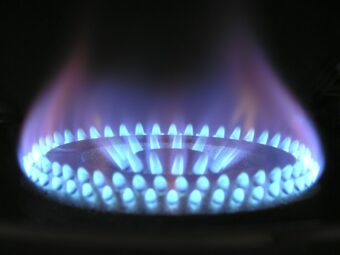
After a significant increase in prices that started before the Russian invasion of Ukraine, but skyrocketed through the second semester of 2022, electricity and gas prices are stabilizing. The prices of energy rose due to an increase in the price of natural gas, which is considered the marginal fuel. This happened because the imports from Russia decreased, and other importers were sought. The energy market is priced after the marginal fuel, which means that the price of natural gas affects the prices of the electricity market. Mechanisms were constructed to alleviate the pressure on consumers, and one of these were subsidies.
In the first half of 2023, average household electricity prices in the EU continued to show an increase compared with the same period in 2022, from 25.3 euros per 100 kWh to 28.9 euros per 100 kWh. Average gas prices also increased compared with the same period in 2022, from 8.6 euros per 100 kWh to 11.9 euros per 100 kWh in the first half of 2023. These prices are the highest recorded by Eurostat.
More:
- PRIVATE SECTOR AND DIPLOMATIC SUPPORT GROWS FOR GLOBAL GREENHOUSE GAS WATCH
- MORE ELECTRICITY FROM RENEWABLE SOURCES IN MONTENEGRO
- DECLINING ELECTRICITY CONSUMPTION IN ADVANCED ECONOMIES IS WEIGHING ON GLOBAL DEMAND GROWTH THIS YEAR
The price without taxes on electricity and natural gas is decreasing. The countries, in part, withdraw their support measures. As a result, the final customer prices with taxes are slightly higher than the previous reference period.
Compared with the first half of 2022, in the first half of 2023 the share of taxes in electricity bills dropped from 23 percent to 19 percent (-4 percent) and in the gas bill from 27 percent to 19 percent (-8 percent), with all EU countries having in place governmental allowances and subsidies or reducing taxes and levies to mitigate high-energy costs.
This information comes from data on electricity and gas prices published recently by Eurostat. The article presents a handful of findings from the more detailed Statistics Explained articles on electricity prices and natural gas prices.
Electricity prices rose in 22 EU countries in the first half of 2023
Data also show that household electricity prices increased in 22 EU countries in the first half of 2023 compared with the first half of 2022. In national currency, the largest increase (+953 percent) was reported in the Netherlands. This increase is related to several factors: tax relief measures from 2022 were not continued in 2023 and at the same time, energy taxes on electricity doubled for households. A price cap will be incorporated and this will lower the prices at all levels quite significantly in 2023. Large increases in national currency were also registered in Lithuania (+88 percent), Romania (+77 percent) and Latvia (+74 percent).
Large decreases in national currency were registered in Spain (-41 percent), followed by Denmark (-16 percent). Smaller decreases were reported in Portugal (-6 percent), Malta (-3 percent) and Luxembourg with close to 0 (-0.4 percent).
Expressed in euro, average household electricity prices in the first half of 2023 were lowest in Bulgaria (11.4 euros per 100 kWh), Hungary (11.6 euros), and Malta (12.6 euros) and highest in the Netherlands (47.5 euros), Belgium (43.5 euros), Romania (42.0 euros), and Germany (41.3 euros).
Gas prices rising in almost all EU members
Between the first half of 2022 and the first half of 2023, gas prices increased in 20 out of the 24 EU members that report gas prices.
Gas prices (in national currencies) surged the most in Latvia (+139 percent), Romania (+134 percent), Austria (+103 percent), the Netherlands (+99 percent) and Ireland (+73 percent). At the other end, were Estonia, Croatia and Italy which registered decreases between -0.6 percent and -0.5 percent, while in Lithuania the price remained unchanged.
Expressed in euro, average household gas prices in the first half of 2023 were lowest in Hungary (3.4 euros per 100 kWh), Croatia (4.1 euros) and Slovakia (5.7 euros) and highest in the Netherlands (24.8 euros), Sweden (21.9 euros), and Denmark (16.6 euros).
Source: EUROSTAT



